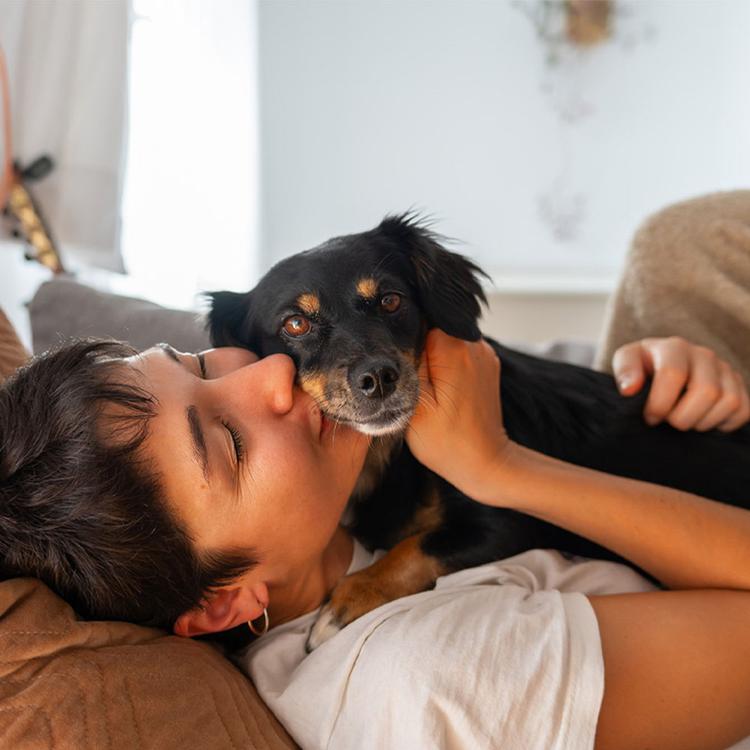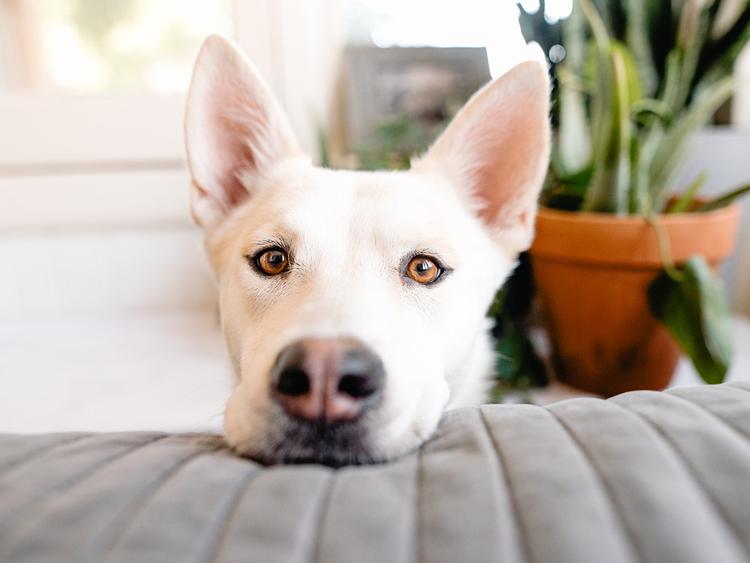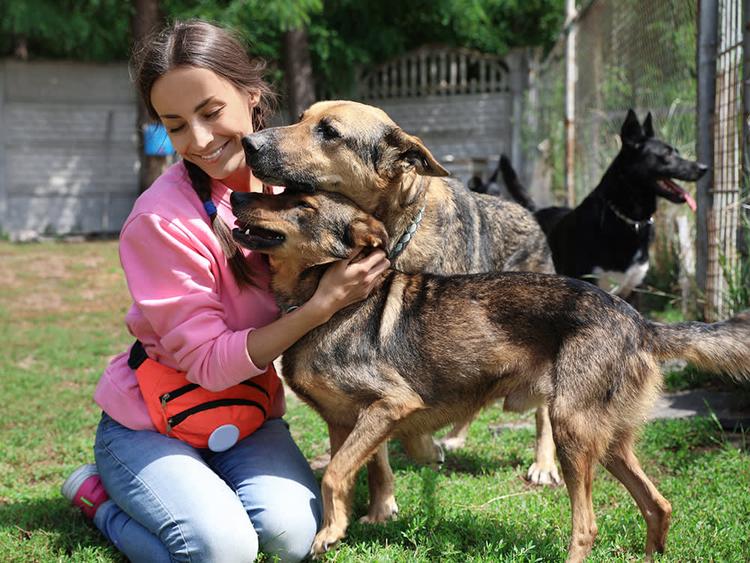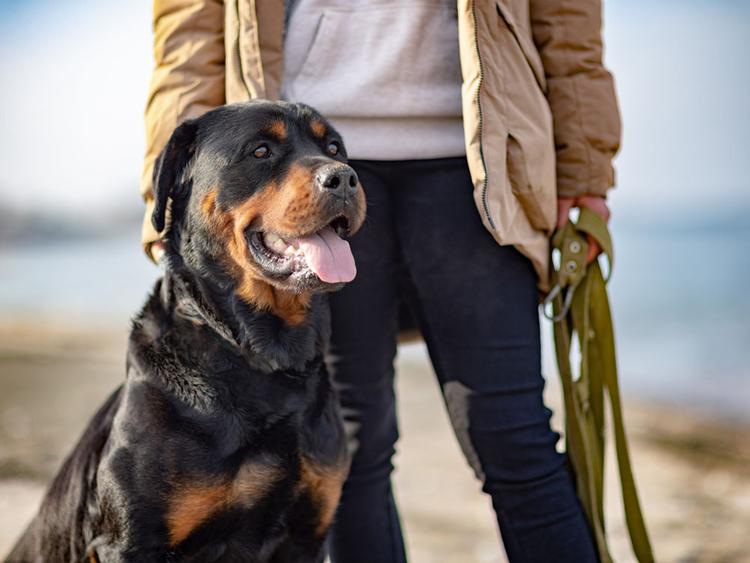The Best Dogs for Runners
Looking for an adorable pet who can double as an awesome running buddy? Read on for some suggestions.
Looking for an adorable pet who can double as an awesome running buddy? Read on for some suggestions.
by Alicia Kort, | May 23, 2024

Andrey Pavlov / Stocksy
If you’re looking for a dog who can be both a household companion and a running buddy, it’s important to consider their athletic ability. While most dogs love to run and play, many dogs aren’t bred to run long distances. But plenty are up to the challenge. We singled out 10 active dog breeds who are primed to cover many miles in a day, thanks to the jobs they were originally bred for.
Dogs who are built to run long distances are the best running companions. Here are more details on what to look for.
It might seem a bit obvious, but this is a crucial requirement if you want a furry running companion. The dog you choose will need to be able to run for an hour or so comfortably. This means that you need to choose a dog who has been bred to do an activity for a long time and won’t get out of breath easily. For example, a pug is not a dog who can run for more than a few seconds.
You will want a medium- or large-size dog, because they’ll be more likely to keep up with your long stride. Just think about how many steps your four-legged friend needs to make to cover the distance of your one step.
Breeds who were once working dogs, specifically sled dogs, herding dogs, or hunting dogs are ideal because they were bred to travel long distances for long periods. They have endurance and are often medium- and large-size, though not always. This type of dog is always happiest when they’re moving or have a job. In this case, that job can be going on a run with you.
A running companion should be at least one and a half years old. Puppies should never be jogging companions because their bones are still developing. They can become easily injured, which could hinder their development. It’s also important to realize that many breeds great for running can also become destructive if they don’t get enough exercise. So even if you’re skipping a run, your pooch will still need an hour or so of exercise.

Volodymyr / AdobeStock
German Shorthair Pointer
You might recognize the German Shorthaired Pointer from classic paintings of hunting scenes, in which they’re helping aristocrats locate their felled prey. This gundog breed has immense amounts of energy. Bred for an active lifestyle, they are happiest when running, playing, or even dock-diving. They have power and endurance, so don’t be surprised if they have a faster mile time than you. Thanks to their pack mentality, these short-haired pups are good around other dogs and young children. They weigh up to 70 pounds and can be as tall as 25 inches at the shoulder. German Shorthaired Pointers’ coats are relatively easy to care for: They do shed sometimes and will need regular brushing.

Ivan Gener / Stocksy
Weimaraner
With their long legs and S-shaped bodies, Weimaraners are beautiful, gray hunting dogs designed for running. They might be more excited about your long runs than you are and end up being your running coach. These pups also aim to please: They’re loving, cuddly additions to families with other pets and young children. Kids should still be supervised around this breed, because they can weigh as much as 90 pounds and reach up to 27 inches at shoulder height. The Weimaraner’s coat just needs the occasional run-through, and if you take your pup running, their nails need to be diligently cared for.

Gillian Vann / Stocksy
Rhodesian Ridgeback
The Rhodesian Ridgeback might resemble a chocolate lab, but their main job in Africa used to be tracking lions. This breed is powerful, energetic, and requires daily exercise. Thanks to their lithe form — and ability to follow lions around — this pup is a fun running buddy who can keep up with your pace. When not running, these pups are known for being sweethearts who are great with kids and are loving family companions. They weigh up to 85 pounds and can stand up to 27 inches at shoulder height. Their short coat just needs to be brushed once in a while to keep this pup healthy.

Boris Jovanovic / Stocksy
Jack Russell Terrier
Generally, small dogs usually do not make great running companions, but the Jack Russell Terrier is an exception to that rule. Only weighing 15 pounds and reaching up to 12 inches at shoulder height, the Jack Russell Terrier is a tiny, but high-endurance dog: This breed can run up to five miles with their pet parents. These terriers were originally bred as fox hunters but now need to release their pent-up energy in other ways. Highly affectionate and great with other dogs, the Jack Russell Terrier is also happy to curl up with you on the couch at home. Their coat is short, relatively easy to maintain, and should be brushed once a week.

Studio Firma / Stocksy
Vizsla
The Vizsla, a hunting dog originally from Hungary, loves stretching their legs with you on your jog around the neighborhood or on a trail. Physical activity isn’t enough for this dog, though — it’s important to mentally stimulate the Vizsla’s mind with games or activities to keep them happy, too. These pups make great companions for young children and other furry family members. In fact, these red, short-coated pups prefer to spend all their time by their human’s side and can be clingy. Vizslas can weigh as much as 60 pounds and be as tall as 24 inches. Their coats, like many other dogs on this list, are easy to care for with occasional brushing.

Photoboyko / AdobeStock
American Staffordshire Terrier
The American Staffordshire Terrier, nicknamed the “AmStaff,” might not be the first breed who comes to mind when you think of a dog suited to running, but these pups are more than happy to accompany their humans on jogs. These affectionate terriers are agile, yet graceful runners thanks to their muscular build. AmStaffs also have a lot of energy, so running is a great way to fulfill their exercise quotas. They tend to overheat, though, so pet parents should avoid taking them running when it’s hot outside. AmStaffs can weigh up to 170 pounds and reach up to 19 inches at shoulder height. Their short coats are easy to maintain, by brushing once a week and bathing them when they start to develop an odor.

A itor Lamadrid Lopez / Shutterstock
Australian Shepherd
The Australian Shepherd is known for their stunning, fluffy coats (which are high-maintenance), piercing blue eyes, and immeasurable energy. This pup, who can weigh as much as 65 pounds and stand as tall as 23 inches, was bred to be a herding dog — as their name implies. They are highly intelligent dogs who prefer to spend all of their time with their humans and flock (if they have one). Australian Shepherds need at least one hour of exercise per day but can require as much as two. They’re great running and hiking companions.

Oleksii Syrotkin / Stocksy
Siberian Husky
Thanks to Balto’s heroic sled run across the tundra to deliver life-saving medicine to Nome, Alaska, it’s probably unsurprising that Siberian Huskies are on this list. These Huskies were bred to run, and can probably run further than you can. Huskies are adaptable pups and can live in warmer climates. But as with any dog, they shouldn’t run in high temperatures because they can overheat. These dogs have boundless energy and an independent streak, so they aren’t great picks for first-time pet parents. Loving and affectionate, Huskies are beautiful additions to families with kids and other dogs — just make sure to socialize and train them early. These double-coated dogs shed regularly and have “blowing coats” that need to be groomed twice a year.

Liudmila Bohush / Shutterstock
Australian Cattle Dog
Australian Cattle Dogs are high-energy pups who make excellent running companions thanks to their sleek, muscular bodies. These dogs have a herding background and are used to having a job, so they can become bored easily and get destructive. Working their energy out in a productive manner, such as through running or dog sports, is crucial. These medium-size dogs can weigh up to 50 pounds and stand up to 20 inches tall at shoulder height. Australian Cattle Dogs’ double coats were designed to endure the outdoors, so they are relatively low-maintenance (aside from a weekly brushing) most of the year, though they will need their undercoat brushed out twice a year.

Milles Studio / Stocksy
Mixed-breed dog
Mixed breeds can make perfect running companions. Just ask someone at a shelter or rescue about the exercise level of a pup and which breeds they might be (you can do a DNA test after adoption). Mixes of the previously mentioned breeds are ideal, but you could also adopt a larger dog who would likely be able to run with you. Adopted pups can also be loving, devoted companions.
Many dog breeds aren’t meant to go running with their pet parents. It’s smart to research your dog’s breed to make sure that they can run, because otherwise, they could become injured, overheated, or overexerted.
Breeds with flat faces are not suitable for running, because they can become overworked easily and struggle to breathe.
Many small dogs shouldn’t be running companions, because their small legs will have trouble keeping up. And they generally have not been bred for long-distance runs.
Also, sprinters, like the Greyhound and Whippet, do not like to run long distances, so joggers shouldn’t consider them if they’re looking for a pup to run with.
Before your pooch hits the trail or pavement with you, make sure they can handle loose-leash walking. If your pup constantly pulls on their leash, they will do that when you run, which can be dangerous for both of you. Start walking with treats to train them to let up on a tight leash.
After they’ve mastered that, get your dog in shape. You wouldn’t run a marathon without training for it, so why would you do that to your pup? Here’s a quick guide on how to run with your dog:
Start by introducing a verbal cue. While on your regular walk with your pup, give them a verbal signal that you’re about to start jogging, and then start. They’ll learn that when you say that command, you’re both going to run. If you’re a regular jogger, you might want a command, like “Come on!” or “Faster!” to tell your dog to pick up the pace a bit.
Next, slowly introduce the idea of running. Turn a minute or two of their usual walk into a run.
After a week, switch a few more walking minutes into running minutes. Notice how your dog behaves — if they stop or start walking, that means they don’t want to continue. Also, be prepared with a bottle of water and collapsible for your pup, and be ready to take bathroom breaks when they need it.
Once you find out if your dog is interested in going on runs with you, you should invest in harnesses or leashes that attach to your waist for you and your dog’s safety. Dog-running gear is important for their comfort, too. If you want to run outside with your dog when it’s warm or cold and dry, you should get them dog booties and paw wax to ensure their pads don’t crack.
When you take a dog on a jog, there are many safety factors to consider before lacing up your sneakers.
Some dogs can run more than 20 miles with their pet parents. Those dogs are in peak physical condition and have been trained slowly over time. Many dogs who are built for long distances can run around five miles, but you should observe how your dog reacts to short runs before attempting this.
That depends on the size of your dog. Large dogs may grow up to 24 months of age, so it could take as many as two years for your pooch to be ready to run on pavement with you.
When the temperature is above 70 degrees, pet parents should shorten the dog’s run. At 80 degrees, they should not even consider taking their dog out for a run. Running outside in hot weather risks a dog’s life and should not be attempted.

Alicia Kort is a writer and editor living in Brooklyn. She’s currently the senior commerce editor at Apartment Therapy. She’s been published in StyleCaster, Electric Literature, Newsweek, Interview, Brooklyn magazine and more. In her free time, she runs, reads, and spends time with her dog-nieces, Maya and Lady, and her cat-niece, Pepper.

Adoption Advice

Behavior & Training

Adoption Advice

Breed Info

Adoption Advice
Who says names have to be long and complicated? One-syllable dog names are easy to say and perfect for training.

Shelters & Rescue
Debunk a few animal shelter myths and learn the benefits of adopting from a shelter or rescue group.


Breed Info

Breed Info
Looking for an MVP doggo with energy to burn? Head to your local rescue or shelter, and check out these breeds and mixes.


Adoption Advice

Breed Info
One of the joys of adopting a dog is sinking your hands into their fluff, and it

Breed Info

Adoption Advice
Here are a few of the best gray names for dogs.

Breed Info
Is this your first foray into dog parenthood? Read all about the friendliest, most adaptive types of pups who can easily fit into your lifestyle.